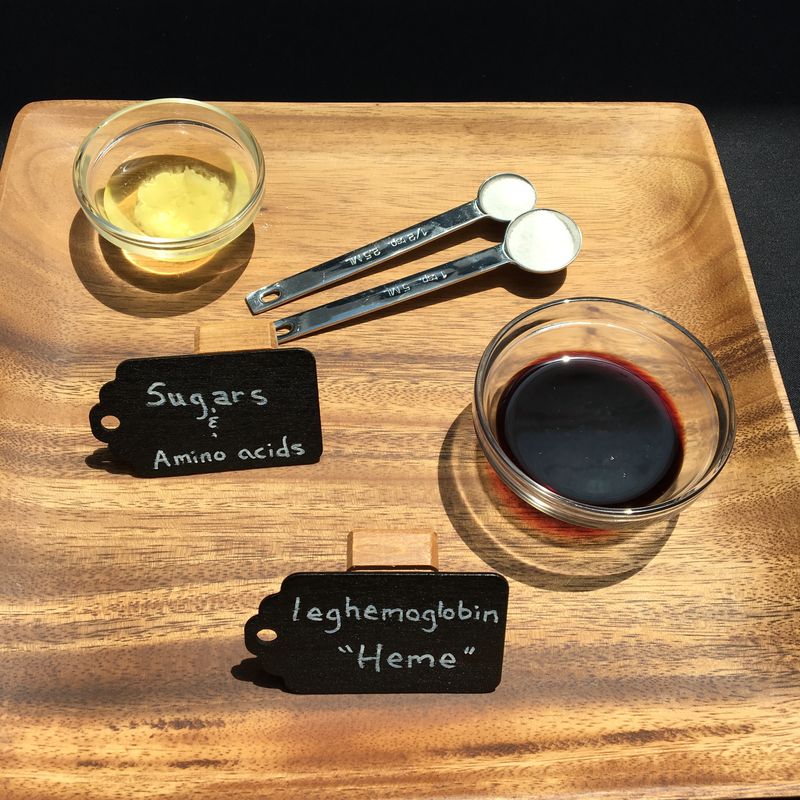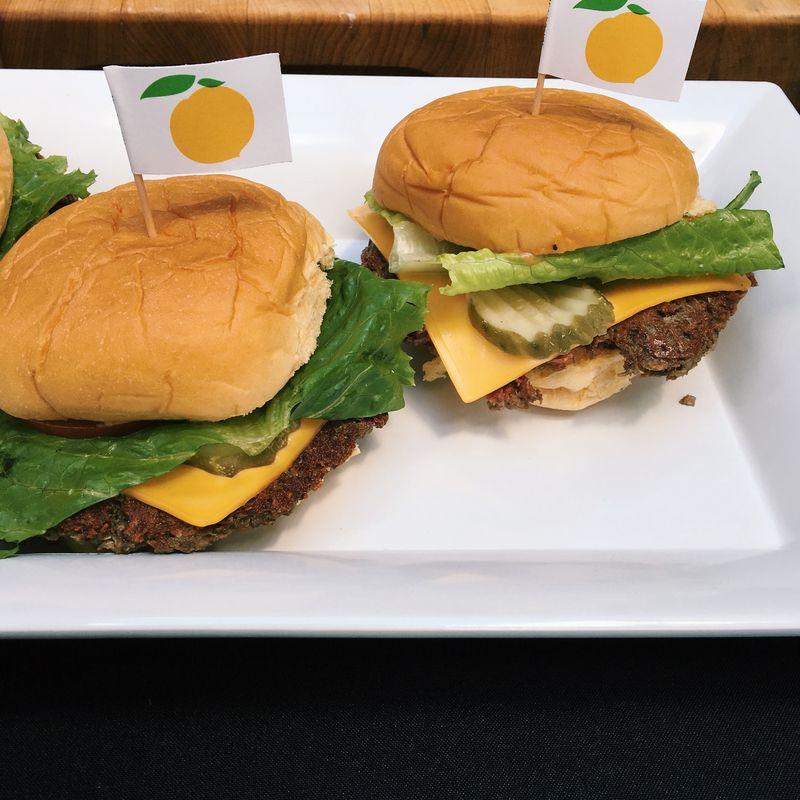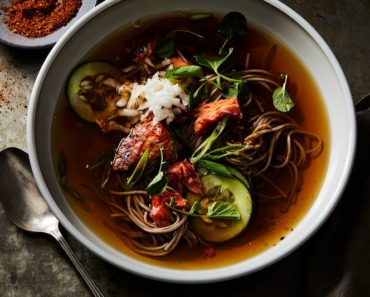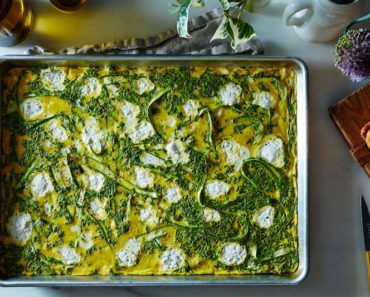They’re making a veggie burger that sizzles and bleeds. They is, well, a couple of different companies newly focused on developing truly meaty not-meat. Today, David Chang announced that he’ll be serving one of those bleeding, sizzling burgers, from California company Impossible Foods, at his newest restaurant, Momofuku Nishi, starting tomorrow, July 27. The burger took $80 million and 100 scientists five years to develop; at Nishi, it will go for $12 (including a side of fries).
The burger is indeed completely vegetarian, composed of about 10 different elements that are naturally derived and that you’ve definitely eaten before, whether you knew it or not—but that you don’t have in your kitchen. (Think: textured vegetable protein, or TVP, for chew and squishiness; coconut oil for juicy melt-in-your-mouth-ness; a “fat tissue” derived from soybeans.)
The most startling and notable among them is the one that gives the burger its bloody quality: heme, best known for being the aspect of blood that makes it red and oxygen- and iron-carrying. But this heme is vegan, a protein isolated from fermented yeast (!).

Even so, the heme is entirely bloody-looking and metallic-tasting, as though you’ve bitten your tongue. This is very disconcerting, but also a sort of scientific miracle. As food scientist Harold McGee said at a press event today, heme has long been part of the discussion in meat science, but Patrick Brown, Impossible Foods founder and former Stanford biochemist, made two heme-related discoveries in the R&D process of the Impossible Burger: (1) That heme catalyzes meat-cooking chemistry and is essential to the production of the flavor we recognize as “meat.” And that (2) it is therefore, essential to the creation of a very vegetarian, very meaty substance like the Impossible Burger.
How did David Chang start dealing in veggie burgers? Patrick Brown of Impossible Foods and Harold McGee’s have known each other since their kids played sports together in their California hometown, and when Patrick started to conceive of a product that would really taste and feel and cook and smell like meat but be more environmentally responsible, he consulted Harold (a scientist “interested in deliciousness,” as he said today). Harold has a regular byline in David’s Lucky Peach and—while we can’t say for sure that Harold planted the seed between Impossible Foods and Momofuku—however the connection was made, the Impossible Burger passed David’s taste standards. “I was genuinely blown away,” he said.

Nishi is the first restaurant to serve Impossible Foods’ product, which arrives at the restaurant as “ground beef”: hydrated and stirred together so it’s ready to be molded into patties. (Impossible Foods’ product isn’t available in stores yet, but eventually the company hopes to sell it just as you’d buy ground beef, and at about the same price per pound.) David has also been experimenting with using the “meat” in dumplings, meatloaf, and “pork sausage” ragu.
And reader, I ate that burger, vegetarian that I am. And it did indeed taste meaty, though not exactly like meat (from what I can remember); my stomach even clamped around it in the same heavy way it would post-cheeseburger.
Would you eat a meaty, not-meat burger? Where do you stand on fake meat? Tell us in the comments.
(via Food52)






